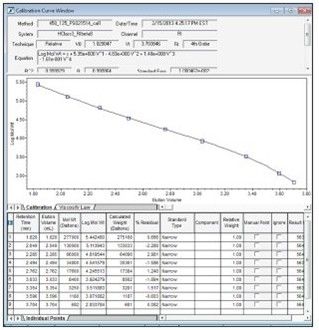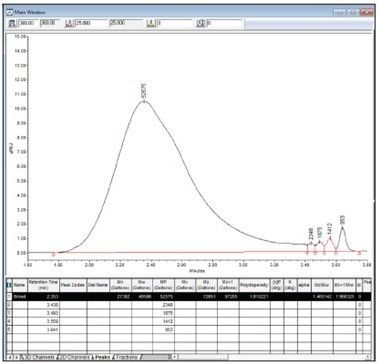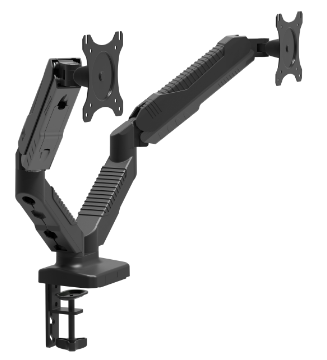purpose
Demonstrate that Empower® software can efficiently and simply process GPC / APC data, calculate molecular weight parameters, and effectively characterize polymer samples.
background
Empower software is a regulatory compliance chromatographic data software (CDS) package for advanced data acquisition, management, processing, reporting, and distribution introduced by Waters. It is widely used in many analytical laboratories for many applications involving pharmaceutical, chemical, food and environmental analysis. In addition, the software package provides powerful processing options for polymer gel permeation chromatography analysis. Based on recent technological advances made in instrument manufacturing, the Waters® ACQUITY® ultra-efficient polymer chromatography (APC ™) system combined with sub-3 μm particle column technology can treat polymers (especially low molecular weight polymers) at an unprecedented speed Perform ultra-high resolution chromatographic characterization. To illustrate Empower's performance, we used a Waters ACQUITY APC ™ system with two columns in series to analyze a polysulfone sample. A narrow set of polystyrene standards is used for molecular weight calibration.
A powerful and efficient tool for calculating molecular weight distribution and automatically generating polymer sample characterization data
Use Empower 3 software with GPC option to perform data calibration and generate calibration curve. Finally, according to the polysulfone calibration curve, the molecular weight parameter of this polysulfone sample is automatically determined again to characterize the polymer.

Figure 1. Calibration curve for polysulfone standards generated using Empower3 software with GPC option.
solution
The GPC / APC system uses two methods for calibration: relative calibration and universal calibration. Relative calibration can be achieved by comparing the unknown polymer with a well-characterized polymer with a wide molecular weight distribution or a group of polymers with a narrow molecular weight distribution. This is usually based on data collected from various detectors (including but not limited to UV, ELSD, RI, and CAD). Universal calibration requires the use of molecular weight sensitive detectors, such as viscometers, small-angle light scattering detectors (LALLS) or multi-angle light scattering detectors (MALLS). Empower 3 software with GPC option can adapt to various calibration modes.
This example illustrates the calibration of the ACQUITY APC system by analyzing a set of narrowly distributed polystyrene standards. The molecular weight of each polystyrene standard at the peak (Mp) is used to determine the molecular weight relative to the retention time or retention volume. The data processing method can be easily created using a data processing method creation wizard, or a custom integration event can also be manually set.
Once the data is automatically integrated and quantitatively analyzed, a calibration curve is generated immediately. Figure 1 shows the polystyrene calibration curve obtained by plotting the Mp log against the retention volume. Once the calibration curve is generated, the sample is processed immediately, and the molecular weight distribution is calculated and displayed in a conventional Empower data table, as shown in Figure 2. Further data processing using the GPC option in the Empower 3 software allows users to visualize polymer data in a variety of ways, including dwt / d (logM) and cumulative% can be displayed in the same graph at the same time relative to the molecular weight log within the slice The molecular weight distribution diagram of the changes is shown in Figure 3. You can export analysis data or use existing templates or custom report templates to generate a report containing any or all results (including molecular weight, chromatogram, distribution, and calibration curve).

Figure 2. Chromatogram of polysulfone. Molecular weight parameters such as Mw, Mn, Mz, and polymer dispersion index are calculated from a calibration curve generated using a set of narrowly distributed polystyrene standards

Figure 3. Molecular weight distribution of a polysulfone sample analyzed using APC XT 450Ã… and 125Ã… columns connected in series.
to sum up
We used the ACQUITY APC system to quickly analyze a set of narrowly distributed polystyrene standards and a polysulfone sample, and used Empower 3 software with the GPC option to process the relevant data. A relative calibration curve is drawn according to the injected polystyrene standard, and the molecular weight distribution data calculated automatically by the software is used to characterize the polymer. It has been proven that Empower 3 software with GPC option is both easy to operate and versatile. It can calculate molecular weight distribution and automatically generate characterization data for polymer samples. Combining the many functions of Empower3 software with the GPC option and the analysis speed and resolution of the ACQUITY APC system provides a powerful and effective tool for the effective characterization of new and existing polymers.
In the office environment, if the display is placed too close, it is easy to have difficulty in focusing and reflecting light when looking at the display, which makes the eyes sour. If it is too far away, the body will lean forward and suffer from pain in the neck and lumbar spine. This series of problems do not conform to the hidden dangers of ergonomics, which will harm your health over time.
Kingstar professional display bracket, so that all this is no longer your trouble! It can adjust your monitor to any position suitable for you, far and near, high and low arbitrary adjustment, to maximize the adaptability of your monitor and mobile office needs.


Adjustable Monitor Arm, Monitor Desk Mount, Computer LCD Stand Holder
Ningbo YINGBOTE Trading Co.,Ltd , http://www.intelligentoffice-cn.com
